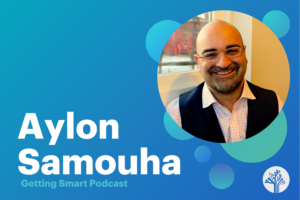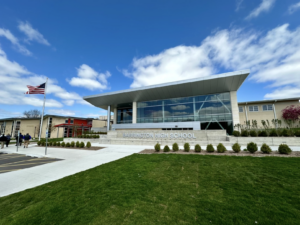Blending Middle Grade Humanities

A new bundle of blog posts, sponsored by The Nellie Mae Education Foundation in partnership with Getting Smart, titled “Getting Smart on Blending Middle Grade Humanities” was released today. The collections outlines student-centered approaches to learning in blended humanities.
Given the breadth of the field, humanities integrates into many other content areas. Think about the impact strong reading skills can have in a math course or strong writing skills can have in a science class. We see this content integration throughout schools that incorporate Deeper Learning and project-based learning as foundational approaches to learning.
 As we continue to create technological solutions to dilemmas we face and problems we seek to solve in our environment, for social justice, for increased opportunity for all, or for commerce, we certainly need a strong background not just in STEM fields but also in the humanities. We know integrated content occurs naturally in the real world. There are excellent blended approaches featured in this collection that allow students to make these connections across content areas. In other words, there are no silos or containers for knowledge.
As we continue to create technological solutions to dilemmas we face and problems we seek to solve in our environment, for social justice, for increased opportunity for all, or for commerce, we certainly need a strong background not just in STEM fields but also in the humanities. We know integrated content occurs naturally in the real world. There are excellent blended approaches featured in this collection that allow students to make these connections across content areas. In other words, there are no silos or containers for knowledge.
“Getting Smart on Blending Middle Grade Humanities” highlights best practices as well as leaders in the field such as Literacy Design Collaborative and Scholastic Read 180, next gen tools that are utilizing blended approaches including Big History Project and Apps for Good, articles by Getting Smart’s Tom Vander Ark, and a Google Hangout featuring Tom and David Ruff of The New England Secondary School Consortium.
Download your copy now! As you read the bundle, share your feedback, thoughts and contributions using #SmartBundle and #BlendedHumanities across all the social media platforms.
Sponsorship. For information on sponsoring a bundle visit our Smart Bundle Library and contact Carri Schneider.
This bundle was published in partnership with The Nellie Mae Education Foundation (NMEF). NMEF works with schools to implement the principles of student-centered learning—learning that is personalized, engaging, competency-based and happens anytime, anywhere.
Scholastic Read 180 and Literacy Design Collaborative are Getting Smart Advocacy Partners.







0 Comments
Leave a Comment
Your email address will not be published. All fields are required.